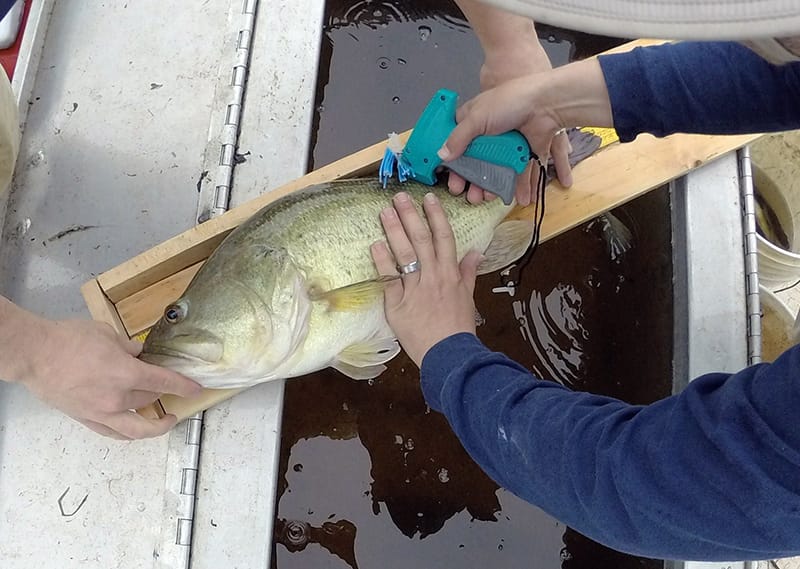The Evolution of Fish Tags: From Simple ID to Integrated Data Loggers
Once upon a time, tagging a fish was as simple as attaching a small plastic label with a number. That number might have told a researcher who the fish was, where it had been caught, and maybe where it was released. It was a humble but important start to what would eventually become one of the most fascinating frontiers in aquatic science. Fast forward to today, and fish tags have transformed from basic identification tools into advanced devices capable of recording intricate data on behavior, biology, and the environment.
This evolution didn’t happen overnight. It’s the result of decades of innovation, collaboration between scientists and engineers, and an ever-growing need to understand the complexities of aquatic ecosystems. From conserving endangered species to monitoring climate change, the humble fish tag now plays a central role in answering some of the most urgent ecological questions of our time.
The Early Days: Simplicity That Sparked Curiosity
In the early 1900s, fisheries scientists began using basic physical tags to study migration patterns and population dynamics. These tags were often little more than plastic or metal strips affixed externally to the fish. The process was rudimentary. A fish would be caught, tagged, released, and then hopefully recaptured later. The tag ID would link the fish to a record that included the date and location of both encounters.
Despite their limitations, these early fish tags laid the groundwork for everything that followed. They were simple, inexpensive, and could be deployed in large numbers. But they had one major shortcoming: they relied entirely on recapture. If a tagged fish was never seen again, its story was lost forever.
Acoustic Innovation: Listening to the Deep
The first significant leap in fish tag technology came with acoustic telemetry. These tags emitted sound pulses that could be picked up by underwater receivers placed strategically throughout rivers, lakes, and oceans. Unlike the old-school tags that needed to be physically recovered, acoustic fish tags allowed scientists to monitor movement in real time, even in challenging environments.
Suddenly, researchers could follow a fish as it navigated through spawning grounds, urban waterways, or deep ocean currents. Behavioral patterns emerged. Migrations were mapped with precision. And because acoustic data didn’t rely on human intervention to retrieve, researchers could track fish in a more continuous and less intrusive way.
Acoustic fish tags marked a pivotal moment: a shift from static identification to dynamic observation. The fish were no longer just data points. They were narrators of their own stories.
Enter the Digital Era: Data Loggers and Beyond
With the rise of microelectronics, fish tags started getting smarter. Miniaturized sensors, tiny batteries, and improved computing power made it possible to build tags that not only transmitted a signal but also stored data internally. These data-logging fish tags could record temperature, depth, acceleration, salinity, and even the orientation of the fish’s body.
Imagine following a tuna as it dives hundreds of meters, sensing pressure changes, feeling thermal layers, and weaving through currents. With modern tags, scientists could not only see where the tuna was but also understand what it was experiencing.
Data logging introduced a deeper dimension to fish behavior studies. Tags could be programmed to collect data at specific intervals and could store months or even years of information. While some still required recapture, others were designed to pop off at a certain time and float to the surface, transmitting their data via satellite.
This meant even fish that traveled across continents or into unreachable depths could still share their story.
The Biological Revolution: Internal Monitoring
One of the most recent frontiers in fish tag evolution involves biological sensing. These aren’t just environmental loggers anymore. New fish tags can monitor internal body processes such as heart rate, muscle movement, and stomach temperature. This offers an unprecedented look at how fish respond to stress, predation, and changes in their ecosystem.
In one striking example, tags have been used to monitor the physiological stress of salmon as they migrate through warm river systems. Researchers could detect when the fish were struggling and correlate those stress levels with survival outcomes. This data becomes crucial for informing conservation strategies and protecting vulnerable species.
Real-Time Data and Conservation Impact
The integration of GPS, satellite communication, and real-time analytics is pushing fish tagging into a more connected and responsive future. With satellite-enabled fish tags, scientists can now receive updates within minutes of a fish surfacing. This has proven essential for tracking large migratory species like sharks, swordfish, and whales.
Real-time tracking is not just exciting for science; it’s also a powerful tool for conservation. When fish tags reveal that a critically endangered species is lingering in an area threatened by fishing or pollution, policies can be adapted quickly. Some marine reserves now adjust boundaries dynamically based on real-time tag data, creating what are known as “dynamic ocean management zones.”
The Future of Fish Tags
As technology advances, the next generation of fish tags will likely become more efficient, more compact, and more affordable. There is growing interest in integrating AI and machine learning into data analysis, allowing researchers to uncover patterns they might otherwise miss. Some projects are exploring energy harvesting from the fish’s movement to extend battery life or even eliminate the need for batteries altogether.
The dream is to build a global underwater network where fish tags communicate with autonomous vehicles, floating buoys, and satellite arrays in real time. Such a system would give us a living, breathing map of our oceans — a view into the rhythms of marine life as rich and complex as the ecosystems themselves.
A Small Tag with a Big Story
Fish tags started as simple tools for identification, but today they carry stories that span continents and dive into depths we barely understand. They tell us about survival, adaptation, migration, and resilience. They help us protect what we cannot always see. And as they evolve, so too does our connection to the vast, mysterious world beneath the water’s surface.
The future of marine science may be powered by circuits and satellites, but at its heart, it still relies on a quiet partnership between humans and the fish they seek to understand.









Add comment